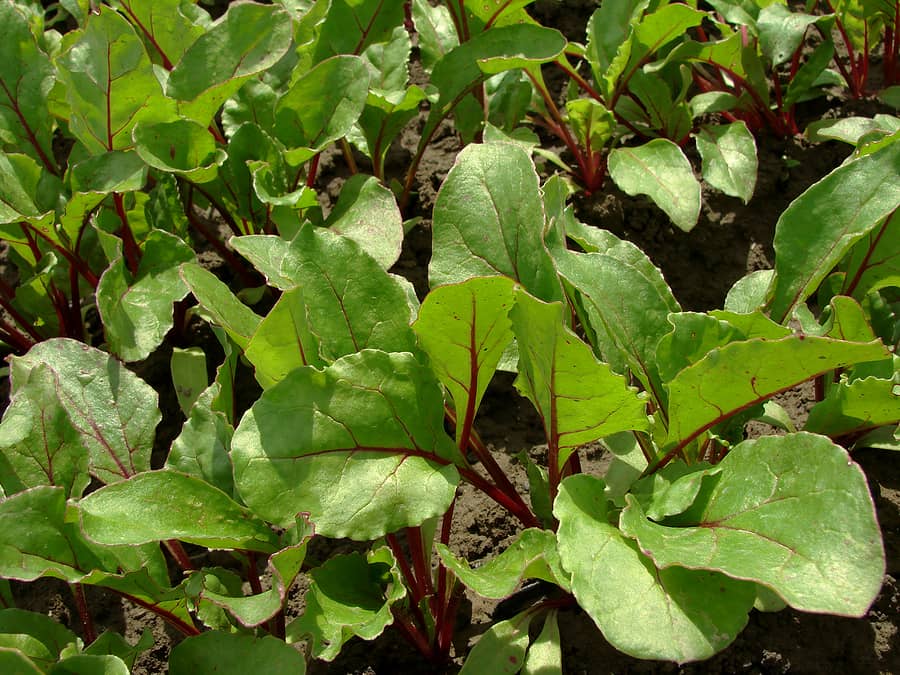Pests
Latest stories
More stories
-
Brussels Sprouts Growing Problems: Troubleshooting
Brussels sprouts are a fall vegetable; there is not enough cool spring weather in most regions to bring sprouts to harvest before summer. Brussels sprouts require about 3 months to reach harvest size. Sprouts–buds or heads that resemble miniature cabbage–form in the axils of leaves. Sprouts appear first at the bottom of the stalk and […] More
-
Cabbage Growing Problems: Troubleshooting
Grow cabbage as rapidly as possible. Give cabbage plenty of moisture and be sure to feed it through the season–a planting bed amended with aged compost and side dressings of compost tea every two weeks will do the job. Cabbage can be grown in three distinct crops: early, mid-season, and late. Early cabbage can be […] More
-
Onion Family Growing Problems: Troubleshooting
Onions and their close relatives–chives, garlic, shallots, and leeks–are among the oldest home garden plants. Allium is the genus for these crops. All varieties of Allium require loose, well-drained soil rich in nitrogen.There are hundreds of varieties of onion family plants. All suffer from similar pests, diseases, and cultural problems Good Products for Pest and […] More
-
Beets and Swiss Chard Growing Problems: Troubleshooting
Beets grow best in cool weather. For best fresh eating, harvest beats when they are half grown–about six weeks after sowing. Beets will still be good eating when grown to full size. Thinning beets is important: thin first when roots begin to thicken–the tops will be young and tender and can be served fresh in […] More
-
Broccoli Growing Problems: Troubleshooting
Grow broccoli as you would cabbage. Grow broccoli as rapidly as possible. Give broccoli plenty of moisture and be sure to feed it through the season–a planting bed amended with aged compost is an important start. While broccoli is hardy at maturity, young plants should not be subjected to frost. Here are common broccoli-growing problems […] More
-
Carrot and Parsnip Growing Problems: Troubleshooting
Carrots and parsnips grow best in loose, sandy, humus-rich soil. Size does not make for more flavorful carrots and parsnips. For the best flavor, lift both crops before they reach maximum size. Carrots and parsnips can be sown thickly; later thin both from 2 to 2½ inches apart or more depending upon the variety. Young […] More
-
Celery Growing Problems: Troubleshooting
Celery requires plenty of moisture, fertile soil, and a long, cool growing season. You can start celery from seed, but germination is slow–about four weeks. Sow seeds indoors at least 10 weeks before seedlings are to be set out. A better plan might be to purchase celery starts when you are ready to plant. Even […] More
-
Okra Growing Problems: Troubleshooting
Okra can be grown with ease wherever sweet corn is grown. Okra is often associated with the South–think gumbo soup, but it grows well in northern gardens as well. Okra grows in average soil; start okra when the soil and air temperature are right for planting corn For okra growing tips see Okra Growing Success Tips […] More
-
Potato Growing Problems: Troubleshooting
Potato growing success can be had with well-drained, deep, sandy loam containing plenty of humus paired with cool, moist conditions. Plant potatoes in early spring after the danger of frost has passed. Use disease-free seed potatoes; cut each potato so that two eyes are on each piece. Even under these ideal growing conditions, potatoes are […] More
-
Eggplant Growing Problems: Troubleshooting
They can be difficult to grow without these ingredients. Here is a troubleshooting list of possible eggplant problems with control and cure suggestions: (More eggplant growing success tips are at the bottom of this post.) Good Products for Pest and Disease Control at Amazon: Eggplant seed and seedling problems Seedlings are cut off near the […] More
-
Pea Growing Problems: Troubleshooting
Fresh-picked home-grown green peas are worth the effort. The flavor of fresh-picked peas will far outdistance the flavor of store-bought peas because the flavor of peas dulls quickly after picking as sugar changes to starch. Peas grow best in cool weather, but peas are not limited to spring planting. Late summer and fall planting can […] More
-
Tomato Growing Problems: Troubleshooting
Tomato plants are susceptible to several diseases and pests. Preventing problems is the best-growing strategy. Best tips on How to Grow Tomatoes. Here is a troubleshooting list of possible tomato problems with brief control suggestions. For a full description of pests and diseases and prevention and controls click over to the Pest Problem Solver of […] More














